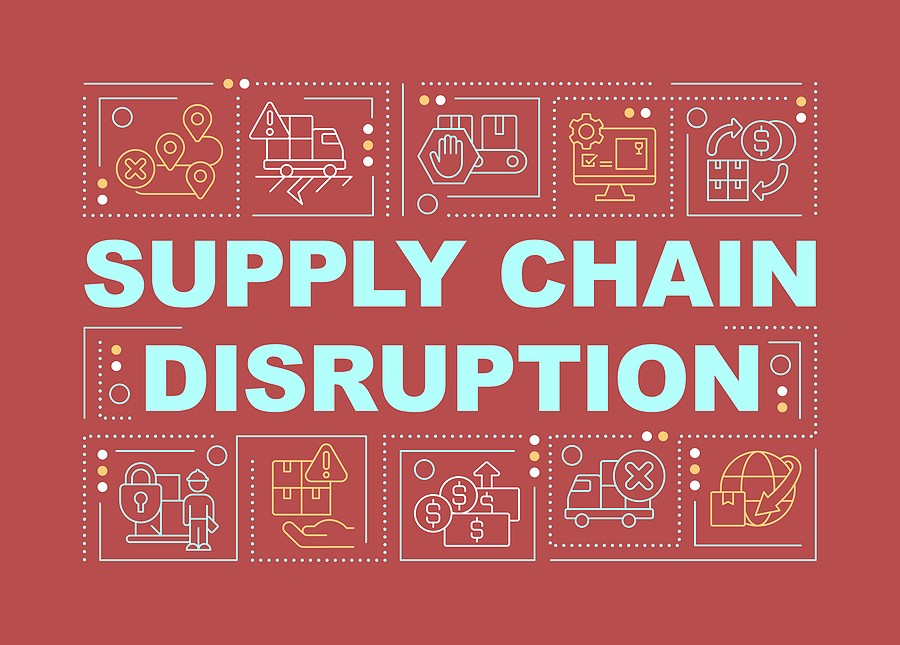

Inflation and disruption are increasing again. Wholesale inflation as measured by the producer price index increased by .5% since last month which was more than expected. Core inflation (excluding food and energy) went up by .3% which was also more than expected.
These figures coincide with what we are seeing across a broad spectrum of clients. Raw materials, components, and other inputs continue to increase and are challenging to cover with increased pricing. Thus, margins decline, additional improvements and cost reductions are pursued, and clients prioritize customers and/or increase prices to cover costs.
Disruption is also increasing as the UAW strike persists, the Israel war started, and the China risk continues to escalate. Unfortunately, potential strikes and labor union negotiations / disputes seem to be contagious and are exploding across the supply chain. At the minimum, it causes supply chain partners to make preemptive moves and creates disruptions along the supply chain. Global risk continues to expand and appears contagious as well.
Inflation: Pivoting From Reactive to Proactive
If clients are not proactive in addressing rising input costs, margins decline. Unfortunately, during the height of the pandemic, they were racing to keep up to simply survive and didn’t always keep with inflationary pressures quickly enough. Your options become limited as time goes by. For example, a potential consumer products manufacturing client had significant price increases on purchased components. Fast-forward a year later, and the executive team wanted to address these issues. However, by then, customers were less accepting of price increases and too much time had gone by that cost reduction efforts were lagging.
We were brought on to provide business consulting assistance. Although time has passed, we helped them put together a customer and profitability model so that they could decide which products to discontinue, which customers to request price increases from (and how much), which customers and products to focus on and where to focus operational improvement efforts. We provided a roadmap for improvement; however, the benefits were muted from what could have been achieved if proactive earlier.
On the other hand, a building products manufacturing client also experienced rapid and frequent price increases with their raw materials. They quickly pivoted and pursued two paths forward. First, they assessed the impact on product groupings and key customers and passed on price increases for what seemed fair. As most clients did, they absorbed some of the price increases while passing on what made sense. We also proactively addressed service policies with the Sales and Operations teams. And they pursued backup suppliers, material changes, waste/ scrap reduction activities, and several other operational improvement strategies to maintain and improve margins. For additional ideas strategies for proactively navigating inflationary pressures, read our Brushware article “Case Study: Strategies to Successfully Navigate Inflation“.
Disruption: Pivoting From Reactive to Proactive
Similarly, if clients are not proactive in addressing disruption, it can lead to lost and unhappy customers and decreased profitability. Depending on each client’s end-to-end supply chain, the situation is different. For example, if the client is supplied from Russia or Ukraine, disruptions have already occurred, and there doesn’t appear to be an end in sight. If transported through the Suez Canal, they were likely disrupted by the stuck ship. Certainly, during the pandemic, if supplied by Asia, they experienced delays as ships mounted outside the L.A. and Long Beach harbors. Recently, if they went through the Panama Canal, they experienced delays and/or increased costs. If related to one of the potential striking entities, they could have experienced preemptive disruption, and if they related to striking entities, they will experience delays. And these are only the ones that popped to mind. We cannot wrap up a paragraph on risk without mentioning the heightened risk of producing in China.
Proactive clients were far more successful during the pandemic and post pandemic as sales pipelines were robust for those that are proactive and ready to pivot. For example, an industrial manufacturer was quickly able to move crews that were cross-trained to the most critical jobs. They also offloaded a portion of their volume to regional and local suppliers that could start up rapidly to supplement their volume. They also pursued creative strategies to hire additional resources and retain talent. They purchased ahead for high risk items and pursued backup sources of supply. Additionally, they also rolled out a SIOP (Sales Inventory Operations Planning) process so that they could get ahead of their demand plan and pursue proactive strategies to ensure Operations could execute the plan while continuing to focus on operational performance and profitability. For additional ideas in pivoting from reactive to proactive with disruption, read our article “SIOP / S&OP: Creating Predictability & EBITDA Growth“.
The Bottom Line
The business pundits do not see an end for inflation anytime soon. As interest rates rise, the rate of inflation has declined; however, it remains sticky. The same story holds true with disruptions. Although supply chains have leveled out, supply chain risk remains at an all-time high and disruptions continue to occur. Successful clients are pivoting from reactive to proactive to satisfy customers, establish priorities and grow profitably.
If you are interested in reading more on this topic:
How Smart Manufacturers are Navigating Interest Rate Hikes


